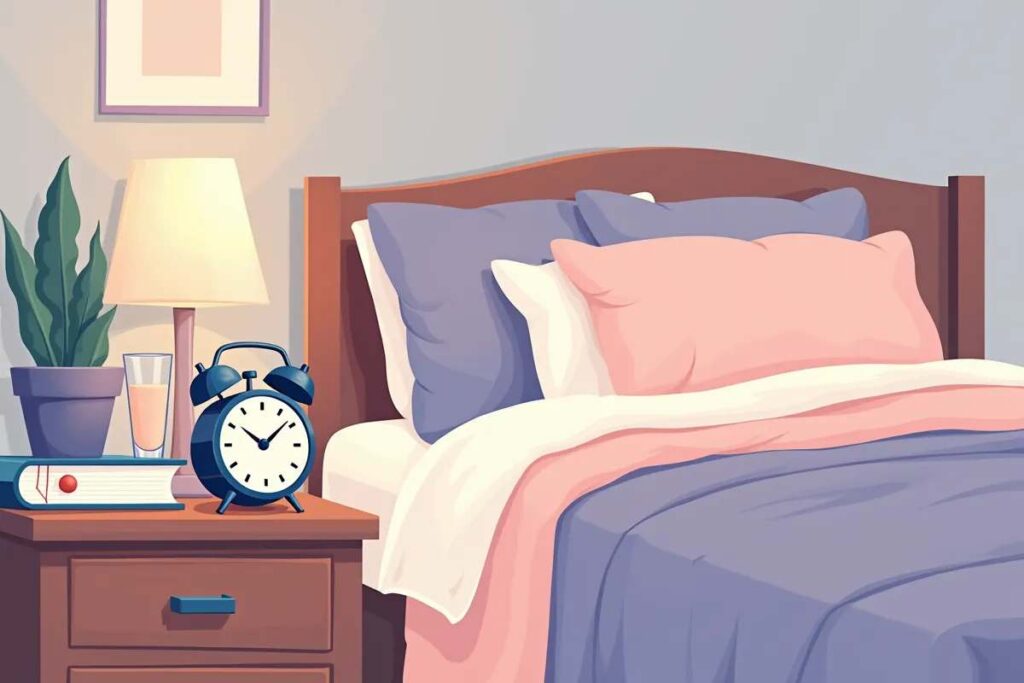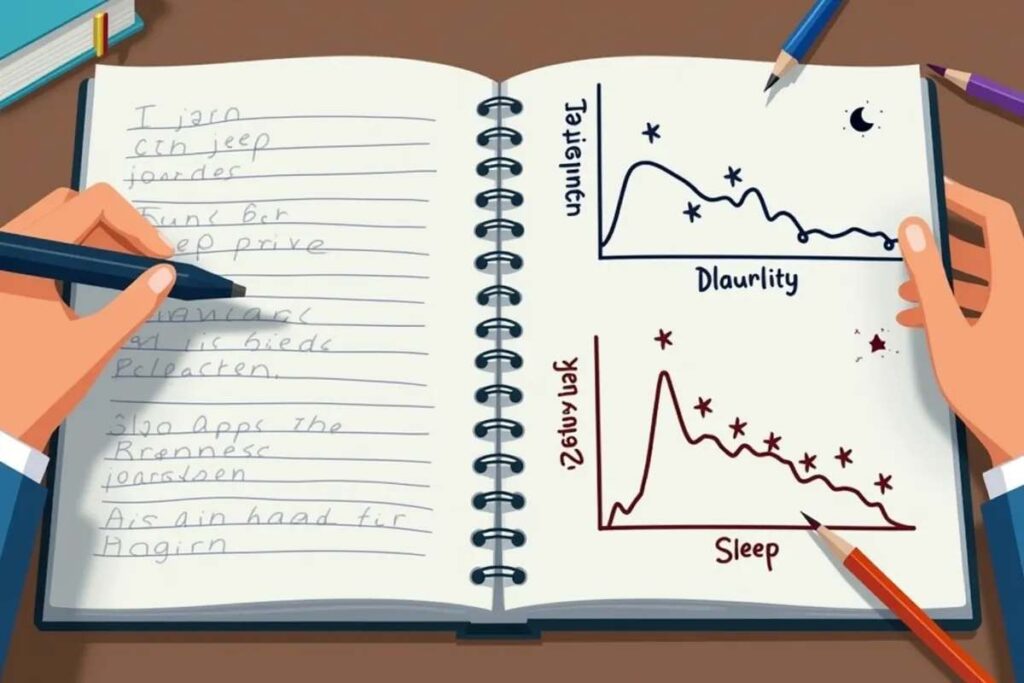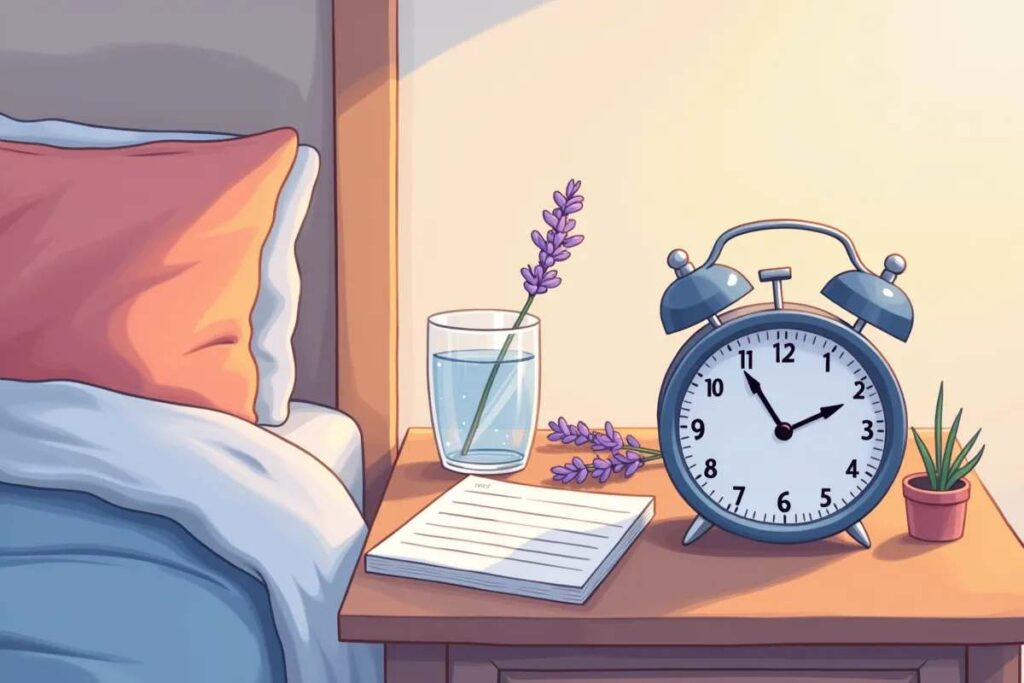Introduction
Ever found yourself tossing and turning, your mind a whirlwind of thoughts as sleep eludes you? Enter the world of sleep journaling – your secret weapon in the quest for better rest. This simple yet powerful practice isn’t just about scribbling down your dreams; it’s a gateway to understanding your sleep patterns, identifying disruptors, and crafting your perfect recipe for restorative slumber. Whether you’re a chronic insomniac or just looking to upgrade your sleep game, grab a pen and prepare to unlock the mysteries of your nighttime world. Let’s dive into how this bedtime ritual could revolutionize your relationship with sleep, one page at a time.
The Power of Sleep Journaling
Importance of Catching Zzz’s Like a Pro
Getting a good night’s sleep is as crucial as the air you breathe. It’s all about the little habits that make snooze time the best. Think of it as creating your sleep sanctuary, which makes catching some Zzz’s a piece of cake, especially if sleep’s playing hard to get. Nailing this can make a difference not just for your sleep, but your whole vibe!
Turning your sleep game up a notch means sticking to a sleep schedule, chilling out before bed, and making sure your bed is comfier than a cloud. Trust me, steering clear of late-night screen scrolling and cutting down on that strong cup of Joe before bed can be game-changers. Here’s a quick look at what counts and why it matters:
| Sleep Habit Basics | How It Helps |
|---|---|
| Stick to Sleep Times | Keeps your body’s clock ticking right, making sleep refreshing. |
| Chill Time Before Sleep | Gets your brain and body ready to relax; eases tension. |
| Cozy Sleep Zone | Makes sure you sleep like a baby. |
| Ditch the Late-Night Screens | Helps your body clock in for sleep, boosting melatonin. |
Wanna dive deeper into these snooze hacks? Swing by our sleep hygiene article.
Spice Up Your Sleep Game with Journaling
Think of sleep journaling as your bedtime detective. It’s a savvy way to figure out what makes your sleep tick. Scribble down any sleep thoughts or occurrences, and you might just spot some clues on what’s messing with your beauty rest.
What goes in this little notebook? Anything from how long you snooze, when you wake up, your morning mood, to what you did before hitting the sheets. It’s a mindfulness thing, right? Helps you figure stuff out and make tweaks where needed. Bring this habit into your night routine, and watch those sleep troubles start waving goodbye.
To get going with sleep journaling, jot down your nightly sleep stories. A few nights in, and you might spot some trends that could help you sleep better, backing up your health groove. For a guide on setting up a killer pre-sleep routine, swing by our pre-sleep routine article.

Benefits of Sleep Journaling
Sleep journaling is like having a chat with yourself about how you snooze. It offers all sorts of perks for folks wanting to hit the sack better—without counting sheep all night. Here’s why keeping a sleep diary can be a game changer.
“Sleep journaling is a powerful tool for self-discovery and behavior change. It brings awareness to habits that may be helping or hurting your sleep, allowing you to make informed decisions about your sleep health.” – Dr. Michael Breus, Clinical Psychologist and Fellow of The American Academy of Sleep Medicine
Tracking Sleep Patterns
First up, sleep journaling helps you spot the rhythm in your sleep routine. Jot down when you hop into bed, when the alarm hits, and any midnight adventures. Check out the pattern below:
| Sleep Journal Entry | Bedtime | Wakey-Wake Time | Nightly Bumps |
|---|---|---|---|
| Day 1 | 10:30 PM | 6:30 AM | 2 |
| Day 2 | 11:00 PM | 7:00 AM | 1 |
| Day 3 | 10:45 PM | 6:45 AM | 0 |
With this info, you can see how your bedtime stories or daytime doings mess with your Zs. Articles on maintaining a consistent sleep schedule can help keep the snore score steady.
Identifying Triggers
Sleep journaling is like being a detective, but for your slumber. Scribble down life’s stress bombs, what you had for dinner, that caffeine jolt, or how glued you were to screens before bed.
You might find that munching late at night keeps you tossing and turning. Or maybe those TikTok binges are the reason you can’t clock out. Your journal’s the sidekick you need to figure out the culprits messing with your sleep.
Check out reads on evening habits for better sleep to tune your routine for smoother snoozing.
Enhancing Sleep Quality
Think of your journal as a roadmap to dreamland. Note down relaxing bedtime rituals, like the 4-7-8 breathing technique or diving into a good book.
Use your notes to set sleep goals. Want a zen sleeping space? Try meditation apps or crank up white noise machines—they’re like a lullaby for adults.
Stick with the journaling, and you’ll crack the code on your snooze strategy. A little scribble can lead to big improvements, helping you drift off easier and wake up feeling less like a zombie.
Getting Started with Sleep Journaling
Sleep journaling can seriously perk up your sleep habits. This section spills the beans on setting up a sleep journal, sticking to a routine, and what goodies to jot down to get the most out of it.
Setting Up Your Sleep Journal
No rocket science here; starting a sleep journal is a breeze. Whether you grab a good ol’ notebook or fire up a digital document, it all depends on what floats your boat. The big thing? Make sure it’s easy to get at so you can use it regularly. Here’s some pointers to kick things off:
- Pick Your Style: Go old school with a paper journal or tech-savvy with a digital app for easy tracking.
- Stay Consistent: Use the same journal every day to keep track of sleep patterns and changes.
- Make It Yours: Add a splash of personality with colors or stickers to make it appealing and boost regular use.
Establishing a Routine
To get the best outta sleep journaling, having a routine is a good shout. Folks often find that doing it in the evening, just before hitting the hay, can dial down stress and amp up relaxation. Here’s a handy routine:
| Time of Day | Activity |
|---|---|
| Evening | Scribble about the day’s highs, lows, and the in-betweens. Get it all out there. |
| Before Bed | Jot down when you turned in and woke up, plus how you slept. Look at how your day played into your shut-eye. |
Mix these with some bedtime rituals or healthy sleep habits for the full package.
What to Include in Your Journal
To really milk the sleep journal for all it’s worth, jot down the right stuff. Here’s some must-haves:
- Sleep and Wake Times: Mark down when you doze off and roll outta bed.
- Sleep Quality: Rate your sleep from 1 to 10—was it a snooze fest or a toss-and-turn show?
- Daily Goings-On: Note any workouts, meals, or big events that might mess with your sleep.
- Emotions and Stress: Reflect on your mood and stress levels and how they mess with your shut-eye.
- Pre-Sleep Habits: Jot down what you do before bed, like those 4-7-8 breathing tactics.
By keeping tabs on all this stuff, you’ll spot trends and get a handle on your sleep issues. For more tricks to better your snooze game, check out sleep hygiene.
Techniques for Effective Journaling
Sleep journaling isn’t just about jotting down thoughts; it’s a passport to better sleep. With some nifty techniques, you can turn a regular scribble session into a sleep-enhancing ritual. Let’s get into three fun ways to journal: reflective writing, gratitude journaling, and problem-solving entries.
“The act of journaling itself can be therapeutic, but when applied to sleep, it becomes a diagnostic tool. By recording not just sleep times but also daily activities, emotions, and physical sensations, we can uncover patterns that significantly impact sleep quality.” – Dr. Alison Harvey, Professor of Psychology at University of California, Berkeley
Reflective Writing
Reflective writing is like having a chat with yourself about your day and how it messes with your shuteye. It’s a chance to spill your thoughts, emotions, and whatever else comes to mind, linking them to how you sleep.
| Reflection Prompt | Example Response |
|---|---|
| What activities gave you sweet dreams or nightmares? | “Evening walks wake me up nicely, but that work presentation kept me up with worries.” |
| How did waking up feel? | “I bounced out of bed, ready to clash with Monday!” |
This style helps you pinpoint what screws up your sleep and what makes it dreamland heaven. Regular reflection helps match your daily doings with your sleep needs.
Gratitude Journaling
Every night, jot down what you’re grateful for. It’s not just about feeling warm and fuzzy; it reduces stress, setting the stage for sleep that’ll make you wanna kiss your alarm clock in the morning.
| Gratitude Examples | Benefits |
|---|---|
| “Big cheers for my friends who listen to my rants.” | Boosts feel-good connections and happiness. |
| “Loved curling up in my nook with a good book.” | Promotes chill vibes before sleep. |
By focusing on the good, it diverts your mind from worries, helping you snooze peacefully. Slip this into your bedtime routine, and watch your Z’s improve.
Problem-Solving Journal
Got a brain that won’t quit when it’s bedtime? Try problem-solving journaling by jotting down what’s bugging you and brainstorming fixes.
| Problem | Potential Solutions |
|---|---|
| Trouble drifting off | “Test out 4-7-8 breathing technique or snuggle up with a book.” |
| Waking up too often | “Stick to a consistent sleep schedule and cut down on the late-night coffee.” |
This practice helps you lay out worries and come up with tangible game plans to tackle them, paving the way for smoother nights.
These journaling styles aren’t just about filling pages. They’re about paving a smoother path to dreamland. Marry these methods with your pre-sleep routine to up your relaxation game and doze off like a pro.

Analyzing Your Sleep Journal
After keeping a sleep journal for a bit, it’s showtime to dig in and see what your nights on the pillow are trying to tell you. These entries are like detective notes revealing clues about your sleep style and possibly how to catch more Z’s. A sneak peek at your own snooze logs can shine a light on patterns, hint at changes to make, and signal when to hit up a pro.
Recognizing Patterns
Cracking open that sleep journal can uncover repeating themes, almost like a sleep saga unfolding. Sort your snooze story into key elements: how long you sleep, your bedtime, wake-up call, and how you felt about your slumber.
| Sleep Component | Average Duration | Notes |
|---|---|---|
| Total Sleep Time | 6.5 hours | Aim for 7-9 hours |
| Bedtime | 10:30 PM | Target consistency |
| Wake Time | 6:00 AM | Consider earlier bedtimes |
| Sleep Quality (1-10) | 6 | Areas for improvement noted |
Spotting patterns helps you see what’s making your nights better or worse. Make connections between bedtime habits or evening routines that might be making the difference — it’s all key to feeling tip-top.
Making Adjustments
With patterns uncovered, little tweaks can go a long way. Small changes might just be the magic ticket to better sleep vibes. Consider fiddling with your bedtime lineup or bedtime zone:
- Consistent Sleep Schedule: Sticking to the same sleep routine helps get your body in sync with its natural rhythm. Ready to dive into that same groove? Peek at more tips on consistent sleep schedule for catching premium shut-eye.
- Evening Habits: Chill-out activities before bed can ease you into dreamland. Think relaxation routines or giving the screen a goodnight kiss, bolstering your sleep game. Check out ideas on evening habits for better sleep.
- Managing Sleep Debt: If you’re constantly lacking sleep, it’s all about understanding and tackling your sleep debt. Find more on bouncing back in our talk about sleep debt.
Seeking Professional Help
If your sleep journal suggests an ongoing problem even after your mighty tweaks, it might be time to ring up a doc or a sleep whiz. They can help suss out if there’s something deeper at play, like insomnia or sleep apnea.
For more help, folks can check out Cognitive Behavioral Therapy for Insomnia (cbt-i), which has proven pretty good at smoothing out sleep woes.
Using the golden nuggets from your sleep journal, folks can pick up healthier sleep tricks that’ll only up the quality of life. For ways to set a chill mode before hitting the hay, try out the 4-7-8 breathing technique or put together a solid pre-sleep routine.

Tips for Consistent Journaling
Sticking to a journaling routine can be tough, especially if sleep’s been a bit elusive. Here’s some friendly advice to help you nail down your sleep journaling habit.
Finding Your Preferred Method
Getting comfy with the way you journal is key to keeping at it. Some folks dig the old-school pen-and-paper method, while others are all about the digital life. Check out these options:
| Method | Description |
|---|---|
| Paper Journal | Good ol’ notebook for jotting down thoughts and sleep tales. |
| Digital Journal | Handy apps or word docs for tracking sleep patterns – tech-savvy style. |
| Audio Journaling | Talking it out for when you feel like chatting rather than jotting. |
Play around with these and see what fits. If you’re up for a chill journaling vibe, think about bedtime rituals to set the mood.
Setting Realistic Goals
Nailing down goals you can actually hit helps make journaling a habit that sticks. Keeping it simple and clear avoids feeling like you’re climbing a mountain. Consider these:
| Goal Type | Example |
|---|---|
| Frequency | Jot down your thoughts 3 times a week. |
| Duration | Spend just 5-10 minutes writing each time, no sweat. |
| Content | Focus on sleep quality and any big stuff that affects your Z’s. |
By breaking things up into bite-sized goals, you’ll start feeling like a champ. This can help you work toward a consistent sleep schedule.
Overcoming Challenges
Stumbling blocks happen—maybe you forget to write or can’t think of what to say. Try these tricks:
| Challenge | Solution |
|---|---|
| Forgetting to Journal | Set a phone alarm or blend journaling into your pre-sleep routine. |
| Writer’s Block | Use prompts or pick topics like daily thoughts or sleep shifts. |
| Feeling Rushed | Set aside time for journaling as a chill part of winding down, fitting it into evening habits for better sleep. |
Spotting these bumps and having ways to handle them keeps you on track with your sleep journaling. This can lead to snagging better sleep and feeling more rested overall. If you’re curious for more help, checkout some meditation apps for sleep or see how exercise and sleep quality might boost your Z’s.
Integrating Journaling into Your Sleep Routine
If you want better zzz’s, weaving journaling into your night chill-out session might do the trick. Yep, we’re talking about setting up a snazzy bedtime groove that gets your head ready to hit the pillow, throws in some scribble time, and just keeps tabs on how all that’s working out.
Creating a Bedtime Ritual
Cue the lullabies! Time to prep your body for dreamland. Think of it like lining up your favorite chill stuff so you’re cozy by the time you need to hit the sack. What can this chill session include?
- Relaxing Activities: Read a book that doesn’t make you think too hard, stretch those limbs lightly, or take a bath that melts away the cares of the day.
- Screen Time Restrictions: Flick off those screens at least half an hour before bed, because your brain doesn’t need light shows before snooze town. For how to lay off your gadgets, don’t miss our article on digital detox for sleep.
- Consistent Timing: Hitting the hay at the same time each night keeps your internal tick-tock happy. Our article on consistent sleep schedule gives you more on why this rocks.
| Bedtime Ritual Activity | Duration (minutes) |
|---|---|
| Reading | 15-30 |
| Light stretching | 10-15 |
| Journaling | 5-10 |
| Meditation or breathing exercises | 5-15 |
Incorporating Your Journaling Practice
Adding a few scribbles before sleep can work wonders. It’s like chatting with yourself, minus the talking out loud.
- Reflective Entries: Jot down the highs, lows, and everything in between from your day.
- Gratitude Lists: Show some love to things you’re thankful for—it’s like giving your mood a hug before bed.
- Sleep Goals: Write down what you’re aiming for in dreamland tonight. Spotting patterns over time makes tweaking your sleep groove easier. Hit up our article on evening habits for better sleep if you want more sleep hacks.
Monitoring Progress
Keeping tabs on how well you snooze is like turning into your own sleep detective. Track what’s working, what’s not, and adjust your game plan accordingly.
| Week | Average Sleep Hours | Sleep Quality Rating (1-10) | Notes |
|---|---|---|---|
| 1 | 6.5 | 6 | Falling asleep like trying to find the last roll of toilet paper at the store! |
| 2 | 7 | 7 | Brought in some breathing magic. |
| 3 | 7.5 | 8 | Nailed that nighttime routine. |
| 4 | 8 | 9 | Woke up feeling like a million bucks. |
With a journal, you can see what’s giving you those sweet Z’s, and tweak till it sticks. For help with sleep woes, our piece on cbt-i explores behavioral tricks to slip into better slumber.
Mixing journaling into your nightly prep not only tidies up your sleep hygiene but ups your all-around wellness game, too.
Connecting Journaling to Better Sleep
Guess what? Grabbing a notebook and pen could be your ticket to a snooze-fest dreamland! Sleep journaling seems to work wonders for those who wanna get serious about their sleep habits. It’s like having a little chat with yourself every day, nudging you to sleep like a baby. Let’s dig into how journaling forms an awesome link to better z’s by building habits, celebrating wins, and keeping up the routine.
Building Healthy Habits
Alright, let’s talk bedtime routines. You know how brushing your teeth is muscle memory at this point? Same deal with getting good sleep! Journaling gets you thinkin’ about what you do before bed and how it affects your sleep. Wanna know what juicy bits to jot down?
| Routine | Description |
|---|---|
| Sleep Schedule | When you hit the sack and rise from the dead |
| Nighttime Rituals | Stuff you do to wind down (read, chill, what have ya) |
| Screen Time | How long you scrollin’ that screen before lights out? |
| Caffeine Buzz | Your coffee count and when you sip it up |
| Getting Active | What’s your move-before-you-groove plan? |
Keep tabs on this stuff in your sleep journal and soon you’ll crack the code on what helps you rest easy. Swing by our sleep hygiene page for extra tips.
Celebrating Successes
A gold star for hitting those sleep goals! Making even tiny strides in your journal can boost your mojo. Noticing that your ZZZs are improving? Means what you’re doing is working! jotted down the times you nail keeping a consistent sleep schedule or found some killer bedtime rituals? Boom! That’s motivation to keep truckin’.
Those small wins write themselves into big victories over time and make you feel like you’re a sleep master.
Keeping Up the Journal Habit
Real talk: sticking with journaling ain’t easy, but c’mon, it’s worth it for sleep’s sake! Here’s how to keep your pen moving:
| Tips | Description |
|---|---|
| Set Journal Time | Pick a time daily—maybe right before hitting the hay—to jot down thoughts. |
| Make It Fun | Apps, doodle journals—keep it lively, buddy! |
| Find A Buddy | Rope in a pal, someone to talk journaling with! |
| Mix It Up | Change styles—draw, doodle, bullet—it’s your canvas. |
On the hunt for better sleep habits? Check out our info-packed articles like evening habits for better sleep and pre-sleep routine.
Build rocking habits, tip your hat to your progress, and keep up your journaling grind. It’s your backstage pass to dreamland—making sleep journaling the ultimate bed buddy for an awesome night’s rest. Sweet dreams!
Conclusion:
Sleep journaling is more than just a nightly scribble – it’s a powerful tool in your quest for better sleep. By consistently tracking your sleep patterns, habits, and influencing factors, you’re arming yourself with personalized data to optimize your rest. Remember, the key lies in regularity and reflection. Whether you prefer pen and paper or a digital app, the insights you gain can lead to transformative changes in your sleep quality and overall well-being. As you embark on this journey of self-discovery and improved sleep, be patient and kind to yourself. Sweet dreams are made of this – dedication, insight, and the willingness to make positive changes. Here’s to nights of restful slumber and energized mornings ahead!
FAQs:
Q: How long should I keep a sleep journal before seeing benefits?
A: Aim for at least 2-4 weeks of consistent journaling to start identifying patterns and making meaningful changes to your sleep habits.
Q: What’s the best time to write in my sleep journal?
A: Many find it helpful to journal both in the evening before bed and in the morning upon waking. Evening entries can help clear your mind, while morning entries capture fresh insights about your night’s sleep.
Q: Can digital sleep tracking apps replace manual sleep journaling?
A: While apps can provide useful data, manual journaling often offers more comprehensive insights into your thoughts, behaviors, and external factors affecting sleep. Combining both methods can give you a well-rounded view of your sleep health.
Q: How detailed should my sleep journal entries be?
A: Start with basic information like sleep and wake times, sleep quality, and any nighttime disturbances. As you get comfortable, add more details about daily activities, mood, and pre-sleep routines to gain deeper insights.
Q: Can sleep journaling help with specific sleep disorders like insomnia?
A: Yes, sleep journaling is often recommended as part of cognitive behavioral therapy for insomnia (CBT-I). It helps identify triggers and behaviors contributing to sleep issues, allowing for targeted interventions.
Q: What if keeping a sleep journal makes me more anxious about sleep?
A: If journaling increases sleep anxiety, focus on positive aspects like gratitude or problem-solving. Consider discussing your concerns with a sleep specialist who can guide you on using the journal constructively.







